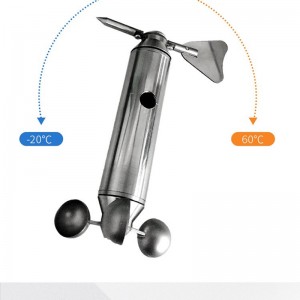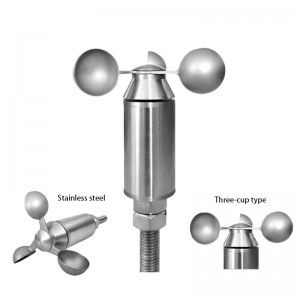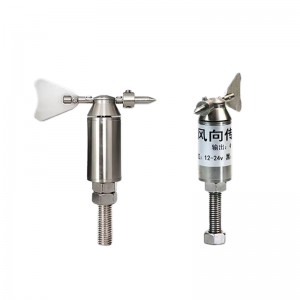The Bureau of Meteorology of Australia recently announced that it will fully deploy a new generation of stainless steel wind speed and direction sensors across the country’s coastal areas to deal with the increasingly frequent extreme weather events. This batch of specially designed high-durability monitoring equipment will significantly enhance meteorological early warning capabilities and provide key data support for disaster prevention and mitigation.
Dealing with extreme weather: Stainless Steel Sensors Become “Sentinels” on the Front Line of Disaster Prevention
As a country surrounded by sea on all sides, Australia has been severely threatened by tropical cyclones, forest fires and extreme storm weather in recent years. The newly deployed stainless steel wind speed and direction sensor is made of 316 stainless steel, featuring outstanding corrosion resistance and salt spray resistance. It is specifically designed for the unique Marine climate of Australia.
“These sensors are the ‘frontline sentinels’ of our meteorological monitoring network,” said Dr. James Wilson, the head of the equipment upgrade project at the Australian Bureau of Meteorology. “Their reliability under extreme conditions is directly related to the accuracy and timeliness of early warning information.”
Technical advantage: Outstanding performance surpassing traditional equipment
The new generation of sensors features multiple technological breakthroughs:
Extraordinary durability performance
The main body is made of 316 stainless steel and can withstand salt spray corrosion for over 2000 hours
With an IP67 protection rating, it can withstand heavy rain and sandstorms
It operates within a wide temperature range of -40℃ to +80℃, adapting to the climate throughout Australia
Precise monitoring capability
Wind speed measurement range: 0-75m/s, accuracy ±0.3m/s
Wind direction measurement range: 0-360°, accuracy ±3°
The response time is less than 0.5 seconds, capturing wind condition changes in real time
Intelligent operation and maintenance features
The solar power supply system can work continuously for 30 days on rainy and cloudy days
4G/ satellite dual-mode transmission ensures smooth data flow in remote areas
Self-diagnostic system, remotely monitoring the health status of equipment
Strategic deployment: Full coverage of key areas
Phase One Deployment (2024-2025)
Queensland coast: High-frequency area of tropical cyclones
New South Wales: Key forest fire monitoring area
Western Australia: The area affected by the Indian Ocean cyclone
Northern Territory: Key Focus for monsoon climate monitoring
Emergency Management
“During the East Coast storm last year, real-time data provided by new sensors helped us issue flood warnings in advance,” an official from the emergency management department said. “This bought precious time for the evacuation of people.”
Agricultural planning
John Smith, a farmer in Western Australia, reported: “Accurate wind speed and direction data have helped us optimize the irrigation system, increasing water-saving efficiency by 30% and reducing wind damage losses at the same time.”
Renewable energy
Wind power operators stated: “Precise wind condition data has significantly enhanced the accuracy of power generation efficiency prediction, and equipment utilization has increased by 25%.”
Investment and Return
The total investment of this project is 12 million Australian dollars and it is expected to bring:
Reduce meteorological disaster losses by approximately 50 million Australian dollars each year
Increase the efficiency of renewable energy power generation by 15-20%
Reduce the losses caused by meteorological disasters to agriculture by 30%
Expert Opinion
Dr. Emily Clark, a professor at the University of Melbourne’s Climate Research Centre, commented: “The deployment of this highly durable sensor represents a significant advancement in climate monitoring technology.” Especially when dealing with increasingly frequent extreme weather events, reliable data acquisition equipment is of vital importance.
Future Outlook
The Australian Bureau of Meteorology plans to complete equipment upgrades at 500 stations by 2025, forming a nationwide climate monitoring network. This project will also provide meteorological monitoring technical support to the surrounding Pacific island countries, jointly enhancing the regional disaster prevention and mitigation capabilities.
For more wind seppd sensor information,
please contact Honde Technology Co., LTD.
WhatsApp: +86-15210548582
Email: info@hondetech.com
Company website: www.hondetechco.com
Post time: Sep-22-2025




